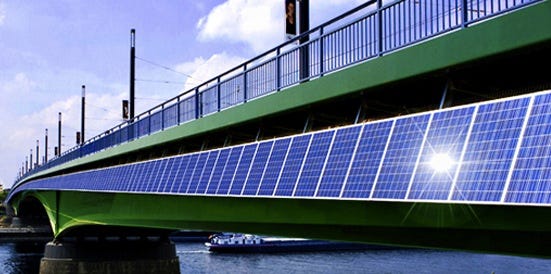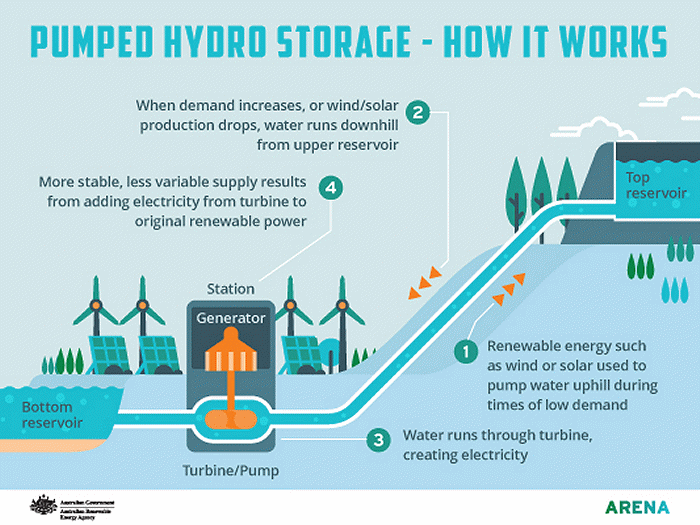Welcome to the web version of Need to Know: Science & Insight, a new form of personal journalism that looks at what we Need-to-Know at this time of pandemic, existential crisis of climate change and unravelling of nature’s life supports. Learn more.
‘Solar panels and wind turbines aren’t much more than toys for generating electricity. Geothermal has some potential in certain areas for heating,’ the head engineer researching renewables informed me during an interview some 20 odd years ago. I was writing an article for the Toronto Star on the multi-billion dollar costs of refurbishing Ontario’s aging nuclear power plants and thought renewable energy might offer a low-cost alternative.
Ontario’s Darlington nuclear power plant had just been completed a few years before at enormous cost of $22.4 billion (2018 dollars), many times more than the original cost estimate. About the same time four out of eight reactors at Ontario’s original nuclear power plant in Pickering were shut down over faults in the design. More than $2 billion was spent to fix two reactors, five times more than estimated. The other two were mothballed.
That head engineer I interviewed worked for Ontario’s power generation utility Ontario Hydro (renamed Ontario Power Generation in 1999). He was the only alternative energy expert I could find in Ontario who wasn’t with an environmental organization. He seemed annoyed by my questions, particularly when I asked about the lower costs, far less complex installation of solar and wind and the advantages of producing electricity where it’s needed rather than having to transport it hundreds of kilometers over power lines no one wants in their backyard and wastes about 6 per cent of what’s generated.
Evidently to a nuclear engineer all energy problems can only be solved through fission.
Fission and buckets of money I should add. Darlington’s reactors are already undergoing a 10-year-long refurbishment at an estimated cost of $12.8 billion. It’s likely to cost more and take longer based on the history of such mega-projects.
Renewable Energy Could End Air Pollution Solve Climate Crisis
Meanwhile the Need-to-Know in 2021 is that in less than ten years electricity from solar, wind and water could power the entire world according to leading energy experts. Yes, they do mean every country in the world.
It would be an enormous effort and cost a few trillion dollars. The Need-to-Know here is that’s just 1-2% of global GDP annually. Based on two decades of research, powering the world on renewables is doable by 2030 say the Global 100 per cent RE Strategy Group, an international coalition of engineers, energy economists and scientists.
Well-known climate scientists Michael Mann of Penn State University and Hans Joachim Schellnhuber, Founder and Director Emeritus of the Potsdam Institute for Climate Impact Research in Germany are among the 40 outside experts who agree 100 per cent renewable energy is possible and doable by 2030.
Previously in Need to Know:
Why Your Next Vehicle is Likely to be Electric
EVs are better technology
EVs are simple machines — just a big battery with an electric motor
EVs require little to no maintenance
EVs median range of 2020 models beyond 400 km — maximum 650 km
EVs will soon cost the same: 2022 in Europe, later elsewhere
In a world powered entirely by green energy, air pollution from fossil fuel use responsible for one in five deaths every year would vanish, and the climate crisis would largely be solved.
It’s not possible until we believe it is
“Most people won’t believe this is possible,” said Hans-Josef Fell, a former German member of parliament and part of Global 100 per cent RE Strategy Group. In the 1990s Fell encountered the same skepticism when trying to get Germany to adopt renewables. Today renewables, including biogas, provide 46 per cent of the country’s electricity.
“When enough people believe it can happen, then it happens,” Fell said in a press conference last week.
Studies show that creating a new 100 per cent renewable energy system would stimulate investments of trillions of dollars and create millions more jobs than those lost worldwide says Brian Vad Mathiesen, Professor in Energy Planning and Renewable Energy Systems at Aalborg University in Denmark.
To date, 11 countries have reached or exceeded 100 per cent renewable electricity; 12 countries have passed laws to reach 100 per cent renewable electricity by 2030.
Australia had very little renewable energy 20 years ago. Today renewables produce 30 per cent of its electricity and that will be 50 per cent by 2025 said Andrew Blakers, a Professor of Engineering at the Australian National University. The State of South Australia banks on solar and wind for 70 per cent of its electricity and uses pumped hydro and batteries for power storage. Balancing the power load when wind isn’t blowing or when the sun isn’t shining has “been far easier than expected” Blakers said.
Clean and Free Energy Key to Prosperity
“Solar is by far the cheapest source of energy,” says Tony Seba, CEO of RethinkX, an independent think tank. Renewables with batteries and other forms energy storage are the key to new societal prosperity and achieving the UN’s Sustainable Development Goals. “Build enough capacity and electric vehicles could be powered for free,” Seba said.
Solar, wind and storage capacities have to be ‘overbuilt’ to meet peak electricity demands. This means building much more than is needed to meet average energy demands. While this looks wasteful or inefficient, this extra capacity means any additional energy is generated for free because there are no fuel costs involved. Hence the potential to power millions of electric vehicles for free.
Cars replaced horses in less 15 years
The potential for rapid transformation of the world’s energy system has a parallel in the speed with which cars replaced horses in the 1900s. That happened in less than 15 years despite enormous barriers such as the lack of paved roads, refineries, car manufacturing, repair shops and high cost of vehicles. I go into more detail in my 2017 Nat Geo article.
Despite all the benefits — remember the power sector is the biggest source of carbon emissions — the barriers to 100 per cent renewable are considerable.
As energy economist Mark Jaccard at Simon Fraser University told me that the more pollution-free, low-carbon renewables are built, the cheaper fossil fuels will get unless the playing field is levelled. That’s where government policies are needed to put a significant price on carbon pollution and regulate the phase out of dirty fuels contributing to air pollution.
Perhaps the biggest barrier to a transformation to 100 per cent renewables will be misinformation pushed by fossil fuel interests, in partnership with conservative media. Climate scientist Michael Mann covers this in his new book, The New Climate War: The Fight to Take Back Our Planet.
Mann documents a number of manufactured anti-renewable myths such as wind turbine sickness syndrome, exploding electric vehicle batteries, toxic solar panels, and others.
This all going to get worse. For example I just googled “100% renewable” and third entry is titled “The 100 Percent Renewable Energy Myth”. I click the link and there’s a professional looking webpage from The Institute for Energy Research (IER). Looks legit right? Before I read a word I check out who is behind IER using a website called Sourcewatch. Turns out IER is a front group for Koch Industries, a major investor in fossil fuels and one of the biggest funder of climate denial. IER has been running anti-renewable propaganda campaigns in the US, Europe and even Ontario since 2009.
Sourcewatch documents their research and I’ve found them to be reliable.
In the next issue of Need to Know I’ll show you how to build or improve your own BS detector. Those who push disinformation are getting ever more clever, so it’s not easy. But after a long time dealing with it I’ve developed some useful hacks.
More on that next time. Until then please stay strong and stay safe.
Stephen




I'm a retired water engineer and pumped storage for electricity generation has been around for about a century. During that time it was used to help even out daytime and night-time electricity demands so that power stations could run more efficiently on a steady output. In the UK there are a few big schemes (Dinorwic in Wales, Falls of Cruachan in Scotland are fabulous examples). However, there are obvious limits! No good expecting to use it in flat territory - you need mountainous country to make the technique feasible and the suitable siting of a large enough elevated reservoir will often be difficult to find, never mind the construction costs. Such mountainous regions also tend to be located well away from population centres, so you've got the two way transmission costs. Using it to overcome the intermittency of renewables suffers these same limitations. Large wind farms are best sited offshore and large scale solar needs flat territory, so there will be few places in the world where renewables and pumped storage can be located alongside each other.
And yet Ontario is doing far better than Germany in reducing emissions.